Table of Contents
Come join us now, and enjoy playing your beloved music and browse through great scores of every level and styles!
Can’t find the songbook you’re looking for? Please, email us at: sheetmusiclibrarypdf@gmail.com We’d like to help you!
Nadia Boulanger: The Architect of Twentieth-Century Music
In the pantheon of musical greats, few figures have wielded influence as quietly profound and universally far-reaching as Nadia Boulanger. She was not a prima donna soloist, nor a composer of widely celebrated masterpieces, yet her name became synonymous with musical excellence, rigor, and discovery for generations of the twentieth century’s most important composers and performers. Boulanger was a pedagogue, a conductor, a composer, and an intellectual force who dedicated her life to the service of music, acting as a living bridge between the traditions of the past and the avant-garde innovations of the future.
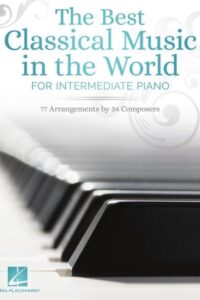
Best Sheet Music download from our Library.
Early Life: Forged in Music and Tragedy
Juliette Nadia Boulanger was born into a musical dynasty in Paris on September 16, 1887. Her father, Ernest Boulanger, was a composer and singing teacher at the Paris Conservatoire, and her mother, Raissa Myshetskaya, was a Russian princess and a gifted singer. Music was the very air the family breathed.
From a supremely young age, Nadia displayed prodigious talent. She entered the Paris Conservatoire at the age of 10, studying composition with Gabriel Fauré and organ with Charles-Marie Widor. She absorbed the lessons of the French school with unparalleled speed, winning first prizes in harmony, accompaniment, fugue, and organ. She became a formidable sight-reader and pianist, skills that would later become cornerstones of her teaching.
However, her early life was also marked by profound loss. The death of her father in 1900 placed financial and emotional strain on the family. This tragedy cemented the intense bond between Nadia and her younger sister, Lili, a compositional prodigy whose genius Nadia fiercely nurtured and promoted. In 1913, Lili Boulanger became the first woman to win the prestigious Prix de Rome for composition. But Lili’s life was plagued by chronic illness, and she died tragically young in 1918 at the age of 24.
Lili’s death was a cataclysmic event for Nadia. Though she had already begun composing to some acclaim (her cantata La Sirène placed second in the Prix de Rome in 1908), she effectively stopped creating her own music. She felt that Lili’s music was of a greater, purer quality, and she subsequently devoted her life to realizing the genius of others. “I can’t cope with my grief,” she said. “I shan’t ever get over it. But I must work, and I have to earn a living.”

Please, subscribe to our Library.
If you are already a subscriber, please, check our NEW SCORES’ page every month for new sheet music. THANK YOU!
The Pedagogy: “The One Who Listens”
It was in teaching that Nadia Boulanger found her true calling. She began accepting private students in her family apartment at 36, rue Ballu in Paris, a address that would become a pilgrimage site for aspiring musicians from across the globe. Her teaching was not a job; it was a vocation, a moral and intellectual undertaking.
The Core Principles of Her Method:
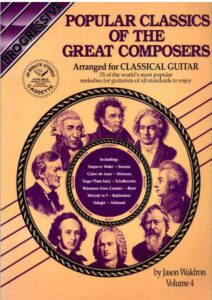
- Absolute Rigor and Technical Mastery: The foundation of Boulanger’s teaching was an unshakable command of musical grammar. This meant a deep, analytical study of harmony, counterpoint, fugue, and sight-singing. Students were immersed in the strict styles of the 16th and 18th centuries, particularly the works of Palestrina and J.S. Bach. She believed that true creativity and freedom in modern composition could only be achieved after one had completely internalized the rules of the past. “You need an established language,” she argued, “and then, within that established language, the liberty to be yourself.”
- The Cultivation of the Ear: For Boulanger, the most important musical organ was the ear. She had an almost supernatural ability to hear and analyze music. Her famous command, “Hear everything you write,” was a mantra. Students were expected to internalize music so completely that they could hear a score in their mind’s ear, detecting errors in voice-leading, harmony, or structure without needing an instrument. This training developed an unparalleled level of aural acuity and inner hearing in her pupils.
- The Personalized Approach: Boulanger famously declared, “I cannot provide a method, I can only provide a way of thinking.” She did not impose a single style or aesthetic on her students. Instead, she sought to identify and unlock the unique voice within each individual. She was as supportive of the neoclassicism of Stravinsky and Copland as she was of the jazz-inflected works of Astor Piazzolla or the modernism of Elliott Carter. Her goal was to give her students the technical tools and critical self-awareness to realize their own artistic visions, not hers.
- The “Why”: She was relentlessly analytical and questioning. A student could not simply present a chord progression; they had to be able to justify its function and emotional effect within the larger structure of the piece. She pushed students to understand not just what they were writing, but why they were writing it. This fostered a deep intellectual engagement with the act of composition.
- The Broader Cultural Context: Music, for Boulanger, did not exist in a vacuum. Lessons were interdisciplinary affairs, filled with references to literature (Gide, Valéry, Cocteau), philosophy, and painting. She believed a complete musician needed to be a complete human being, engaged with the broader currents of culture and thought.
The Disciples: A Who’s Who of 20th-Century Music

The list of Nadia Boulanger’s students reads like a roll call of twentieth-century musical genius. Her ability to attract and shape such diverse talent is a testament to her unique gifts.
- Aaron Copland: The father of American classical music was one of her first and most famous American pupils. Arriving in France in 1921 unsure of his direction, Copland found in Boulanger a mentor who gave him the technical confidence and intellectual framework to forge a distinctly American sound. It was Boulanger who secured him his first major commission, the Organ Symphony, which launched his career.
- The “Boulangerie”: In the interwar years, a wave of American composers flocked to rue Ballu, including Roy Harris, Walter Piston, Virgil Thomson, and Elliott Carter. Each emerged with a strong, individual style, yet all shared the bedrock of technical assurance she provided. She effectively helped create a professional class of American composers who would dominate the nation’s musical life for decades.
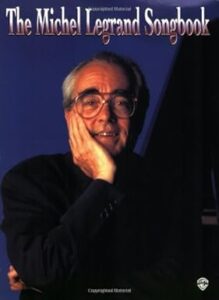
- Astor Piazzolla: The Argentine tango revolutionary arrived in Paris in 1954 hoping to write grand classical works. Boulanger, upon hearing his formal compositions, was unimpressed. It was only when he reluctantly played one of his tangos on the bandoneón that she heard his true voice. “You idiot!” she is reported to have said. “That is the real Piazzolla!” She encouraged him to throw away the rulebook and elevate the tango, leading to the creation of his “nuevo tango.”
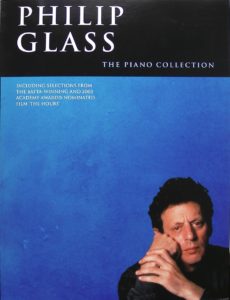
- Philip Glass: The minimalist pioneer studied with her in the early 1960s. After having him write exercises in the style of Mozart, she then assigned him to do the same with a piece by Glass himself. This paradoxical task was a quintessential Boulanger maneuver, forcing him to objectify and understand his own developing language.
- Quincy Jones: The legendary producer and arranger studied with Boulanger in the 1950s. He credits her with teaching him the fundamental principles of orchestration and discipline that underpinned his entire cross-genre career, from jazz to pop film scores.
- Other notable students include Daniel Barenboim (who studied harmony and composition with her), Leonard Bernstein (who sought her counsel), John Eliot Gardiner (who was inspired by her historical rigor), Dinu Lipatti, Michel Legrand, and Ástor Piazzolla.
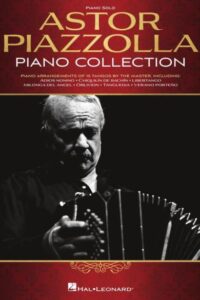
Legacy: The Enduring Influence
Nadia Boulanger’s legacy is multifaceted. She broke barriers as the first woman to conduct many of the world’s major orchestras, including the BBC Symphony, the Boston Symphony, and the New York Philharmonic. She was a tireless advocate for her sister Lili’s music, ensuring it was not forgotten.
But her most significant legacy is pedagogical. She created a “school” without a manifesto, a lineage defined not by a common style but by a common standard of excellence, intellectual curiosity, and integrity. Her teachings are disseminated not through a single textbook, but through the thousands of musicians who studied with her and the generations of students they, in turn, have taught.
She died in Paris in 1979, having taught almost until her last day. Nadia Boulanger was more than a teacher; she was a custodian of musical tradition, a midwife to modernity, and the most influential musical mentor of the last century. Her life stands as a testament to the idea that the greatest art is not always created on the stage or the page, but sometimes in the quiet, dedicated space of the classroom, in the act of passing the torch.
Browse in the Library:
Or browse in the categories menus & download the Library Catalog PDF:
Nadia Boulanger : Fantaisie variée pour piano et orchestre (Eric Le Sage)
Eric Le Sage joue, avec l’Orchestre philharmonique de Radio France dirigé par Leonardo Garcia Alarcon, la Fantaisie variée pour piano et orchestre de Nadia Boulanger.
Nadia Boulanger – 3 Pieces for cello and piano (audio + sheet music)
Performance by: Dora Kuzmin, cello; Petra Gilming, piano.
